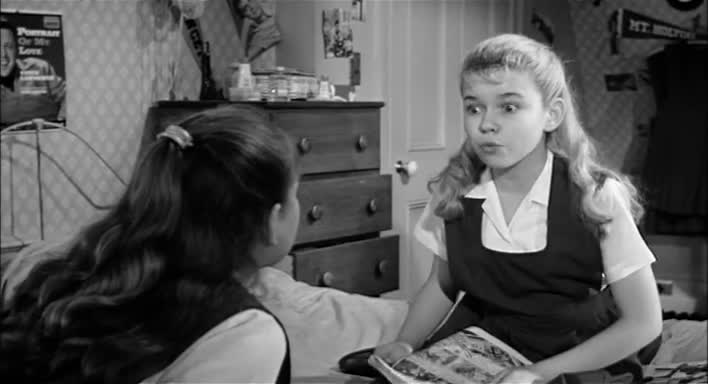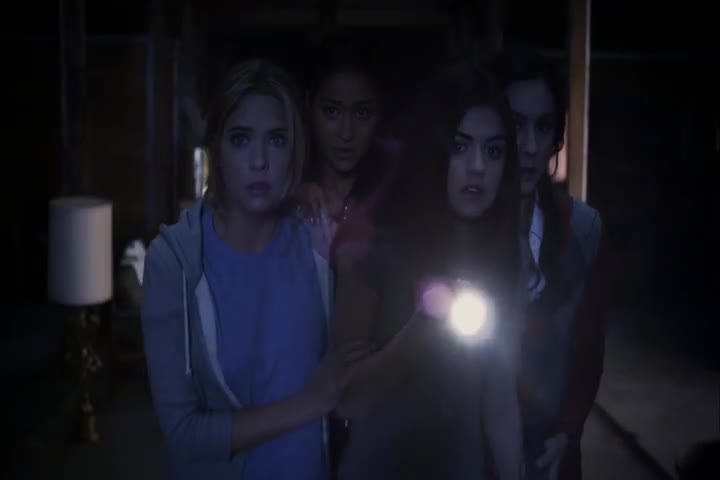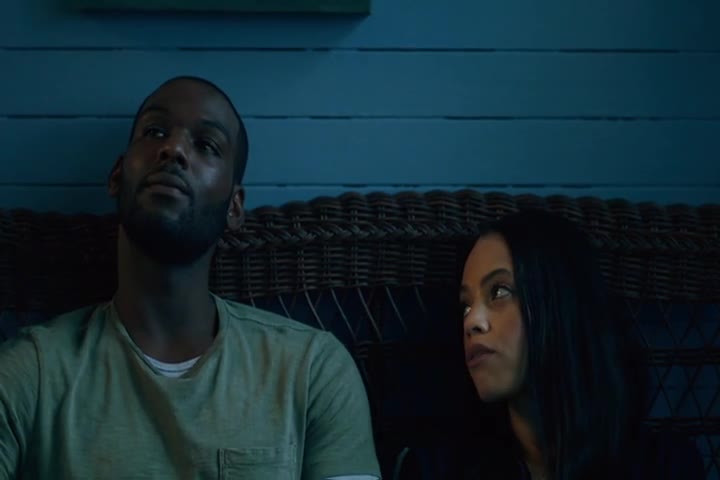Film Language Tag: 180-degree rule
A method of staging and filming action in order to ensure visual continuity from one shot to another. On set, as a scene is rehearsed and blocked for shooting a continuity line—often referred to as the line, imaginary line, director's line, stage line —is decided upon and the camera will then remain on one side of that line; that is, within a 180-degree arc. The effect of this rule is that a character standing on the left and looking towards a character on the right will always be standing left and looking right no matter where the camera frames them from within the 180 degrees of the semi-circular arc. If, however, the line is crossed then the character will appear to reverse their position in the frame. For some framings they will be standing on the left and looking right and for others they will be standing on the right and looking left, and this will be potentially disorientating for the viewer. The 180-degree rule ensures spatial consistency and coherence for characters in a scene. Compliance with this rule (and the 30-degree rule) ensures that shots can be edited together easily using the continuity editing system.
A Dinner With Mr. Chan and Mrs. Chow, In the Mood for Love
Mr. Chow (Tony Leung) and Mrs. Chan (Maggie Cheung) pretend to have dinner together as the other's spouse.
A Recommendation, Bellissima
Maddalena asks Annnovazzi to help her get Maria a recommendation for the film role.
Adam and Camilla's Engagement Announcement, Mulholland Drive
At Camilla’s invitation, Diane attends a party at Adam’s house on Mulholland Drive and is upset to discover that Camilla and David have become engaged.
Bloody Nose, Call Me by Your Name
Elio gets a bloody nose during lunch with some family friends.
Born to Be Sacrificed , Dilwale Dulhania Le Jayenge
Lajjo (Farida Jalal) notices her daughter, Simran (Kajol), looking distraught. She then proceeds to have a conversation with her about the sacrifices women need to make in their lives for men. This convinces Simran in the moment to marry Kuljeet (Parmeet Sethi), and forget about Raj (Shah Rukh Khan).
Breakfast Table Montage, Citizen Kane
The change in the relationship between Charles Foster Kane and his first wife, Emily, is shown over time.
Candles for Christine, Don't Look Now
Laura lights candles in honor of Christine at a church, where John catches sight of Wendy and Heather.
Cardinal Volleyball, We Have a Pope
The Pope had a nervous breakdown and has gone missing after the Papal conclave. The cardinals do not know that he is missing because the manager of the Vatican has placed a Swiss guard in the Pope's quarters to make his room seem occupied. While the Cardinals are waiting for the "pope" to emerge from his room, the psychiatrist who was hired to treat the Pope organized a volleyball game for the Cardinals. This scene captures the Cardinal's joy and commitment to the game.
Celebration With Italo, The Conformist
Marcello joins Italo at a celebration with other blind people.
Closing Sequence, Breathless
After Patricia reveals Michel's whereabouts to the police, Michel rejects his friend Berrutti's offer to help him escape and is shot.
Closing Sequence , In the Mood for Love
Mr. Chow (Tony Leung) whispers into a hole and plugs it with mud.
Closing Sequence, Butch Cassidy and the Sundance Kid
Butch (Paul Newman) and Sundance (Robert Redford) are holding out in a small store, trying to outlast the military that has come after them. The drawn-out shootout ends with both characters running out of the store, guns blazing, to ultimately be killed.
Confrontation, Deewaar
Officer Ravi (Shashi Kapoor), now knowing his brother Vijay (Amitabh Bachchan) is a career criminal whose successes come from corruption, attempts to coerce Vijay to sign a legal document confessing his crimes.
Cora Brooks Cries, No Way Out
After Dr. Brooks (Sidney Poitier) gets arrested, Cora Brooks (Mildred Joanne Smith) visits Dr. Wharton's (Stephen McNally) home. After Wharton leaves, she begins to cry while Wharton's maid, Gladys (Amanda Randolph), holds her.
Da Bodastorèt, Cabiria
Fulvius Axilla and Maciste visit the inn of the Striped Monkey to get a drink. The inn is run by the innkeeper, Bodastorèt.
Different Pains, Salt of the Earth
Esperanza (Rosaura Revueltas) goes into labor while her husband (Juan Chacón) is beaten by two police officers.
Drop the Act, Bellissima
Spartaco and Maddalena get into a domestic quarrel.
Ethan's Will, The Searchers
Ethan (John Wayne) is shot by one of the Comanches and anticipating his own death, he writes a will.
Facemash, The Social Network
Mark and his roommates create Facemash and get it live for people to use.
Favor For Monty, 25th Hour
Frank (Barry Pepper) argues with Naturelle (Rosario Dawson) over her relationship with Monty (Edward Norton).
I'm Erasing You and I'm Happy!, Eternal Sunshine of the Spotless Mind
Joel confronts Clementine about erasing her during the memory of their break-up and Stan and Patrick continue their 'work.'
I'm Sorry For Your Loss, Moonrise Kingdom
Police Captain Sharp and Shakusky talk about their love lives.
Keys to Rome, The Great Beauty
Gep and Ramona are led by Stefano on a night-time tour through Rome's most famous palazzi.
La volontà di Dio, Il Divo
Andreotti is interviewed by the head of a famous newspaper.
Malenkov Prepares, The Death of Stalin
Malenkov prepares to take over as General Secretary of the USSR.
Mary and Rosalie Gossip, The Children's Hour
Rosalie (Veronica Cartwright) tells Mary (Karen Balkin) about a conversation she overheard between two teachers.
Micah Searches for Jo, Medicine for Melancholy
After a brief phone call, Micah (Wyatt Cenac) searches on bike and foot to find where Jo (Tracey Heggins) is staying, knocking on doors repeatedly. Eventually, when he finds her and returns her wallet, he asks to come up to the apartment; she allows him to.
Ministry, The Conformist
Marcello visits the fascist regime's Ministry.
Negotiation, Deewaar
Anand Babu (Satyendra Kapoor), father of Ravi (Shashi Kapoor) and Vijay (Amitabh Bachchan), meets with the nameless mine owner intending to negotiate a compromise, but he is forced to sign away the workers’ rights to save his abducted family.
Nick Meets up with Catherine at the Club, Basic Instinct
Detective Nick Curran (Michael Douglas) goes to the club to meet up with murder suspect Catherine Tramell (Sharon Stone). There he witnesses Catherine kissing her friend, Roxy (Leilani Sarelle).
Noah Talks About His Family, The Defiant Ones
While Noah (Sidney Poitier) and John (Tony Curtis) wait for the townspeople to go to sleep, Noah talks to John about his family.
Opening Sequence , The Silence of the Lambs
Clarice Sterling(Jodie Foster), an FBI trainee, is assigned to interview a serial killer(Anthony Hopkins).
Opening Sequence, Get Out
Chris (Daniel Kaluuya) and his girlfriend Rose (Allison Williams) get ready to drive up to Rose's parents' house for the weekend.
Opening Sequence, The Red Ball Express
The narrator opens the film with a description of the state of the war in France during WW2.
Poor Beasts, Rome, Open City
Manfredi and Francesco meet Maria at a restaurant.
Primal Scene, Citizen Kane
Mrs. Mary Kane makes arrangements with Mr. Thatcher about raising young Charles in the city, while Charles plays outside.
Reveal & Chase Scene, Chaudhvin Ka Chand
Pyare (Rehman Khan) comes to Aslam’s (Guru Dutt) house to find him and happens upon a moment between Aslam and Jameela (Waheeda Rehman), making him realize that Jameela is in fact the woman that he saw at the beginning of the film, who he thought he was marrying.
Saloon Standoff, Django Unchained
Django and Doctor Schultz enjoy a beer but are warned by the sheriff to come outside.
Sharmake yeh kyun sab pardanasheen (Why do these women adjust their veils?) , Chaudhvin Ka Chand
Pyare (Rehman Khan) spys on Jameela (Waheeda Rehman) and the other unveiled women attending a birthday party held by his sister, while they sing a knowing song about men who take peeks at unveiled women, sung by playback singers Asha Bhosle and Shamshad Begum.
She's Beautiful, Bellissima
Maddalena returns hope with a sleeping Maria only to find the filmmakers waiting at her house with a contract.
Singapore, 1963, In the Mood for Love
One year later, Mr. Chow (Tony Cheung) thinks someone has entered his Singaporean apartment.
Slammed Window, Bicycle Thieves
Antonio asks Maria for her help with his cap.
Steiner and Marcello I, La Dolce Vita
Marcello and Steiner talk on Steiner's balcony.
Steve Meets the Killer, Cruising
Steve (Al Pacino) has a face-off with the alleged killer (Richard Cox)
The Death of Ryan Quinn (Opening Sequence), Ratcatcher
Ryan Quinn (Thomas McTaggert) accidentally drowns when roughhousing with James Gillespie (William Eadie).
They Didn't Come To School Today, The Fits
Beezy tells Toni about the girls who had the 'fits' and didn't come to school.
Thomas' Photographs, Blow-Up
Thomas meets his agent for lunch and shows him his recent photographs.
Through the Keyhole, Umberto D.
Maria and Umberto spy on two quarreling lovers in the room next door to Umberto's through a keyhole.
Tilda Spernanzoni, Bellissima
Tilda Spernanzoni visits the Cecconis to teach Maria how to act.
Zack and Bart Kiss for the First Time, Making Love
After going on a dinner date, Zack (Michael Ontkean), who is married to a woman, and Bart (Harry Hamlin) kiss for the first time.




































































